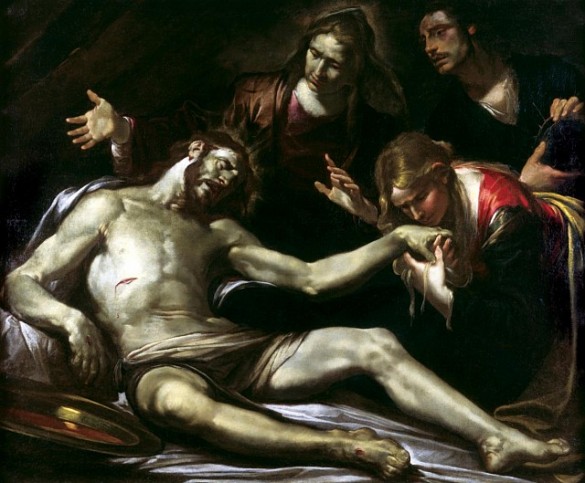Written by Allie Gloe, Curatorial Intern

Gioacchino Assereto (Italian, 1600 - 1649), The Lamentation, c. 1640, oil on canvas, 50 x 62 in., Purchased with funds from The Cummer Council, AP.1988.1.1.
Italian Baroque artist Gioacchino Assereto was born in 1600 in Genoa, France, where he began his training at the studio of Andrea Ansaldo at the early age of fourteen. Throughout the decade in which he was a student, Assereto produced many works close in style and genre. Typical of baroque style, Assereto incorporated drama and emotion in his paintings (almost all of a religious genre) with the aid of the chiaroscuro and sfumato techniques. He continued to improve his technique and style during his twenties and thirties, but it wasn’t until 1639, when he visited Rome, that he discovered a flourishing interest in realism. A year later, Assereto painted The Lamentation.
A common subject of Baroque painting, The Lamentation depicts a dead Christ after his broken body is removed from the cross, along with those who mourn over him. Assereto’s interpretation of The Lamentation is exceptionally powerful. He paints Christ’s flesh as if it has been stripped of pigment. The black background and intense shadows highlight Christ’s body which practically shimmers in the darkness, alluding to His holiness even after death. Assereto renders the Virgin Mary’s face in the same manner, which allows the viewer to understand her deep sorrow. She holds her hands out near Christ’s shoulders while Mary Magdalene gently raises Christ’s hand to her face and Saint John holds the crown of thorns. Assereto’s Lamentation is rich with emotion and offers the drama we look for in Baroque art.


